Brothers Ian and Justin Martin, the owners of Adirondack Guideboat since 2012, build elegant wooden and composite guideboats. They also make cherrywood oars for the guideboats, in the traditional style, which calls for pinned oarlocks that secure the oars and prevent feathering. They recently applied their skills to making spruce oars for boats that use conventional horned locks. These are offered in three lengths: 7′, 7′ 6″, and 7′ 10″. Justin recently shipped a pair of the 7′ 6″ oars for me to try.
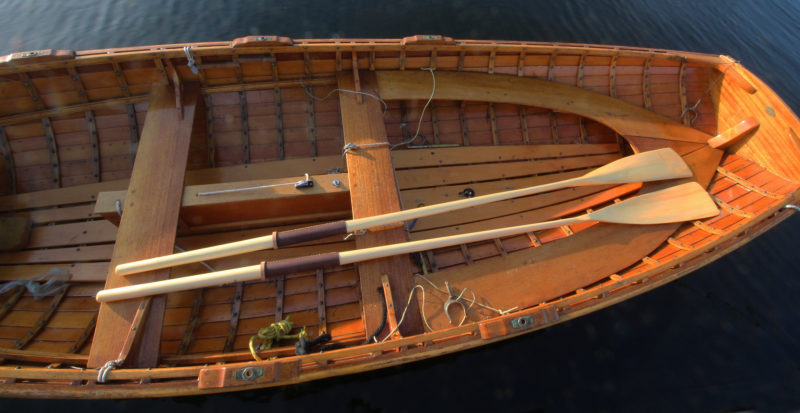 Photographs by the author
Photographs by the authorBegging to be used: The new spruce oars from Adirondack Guideboat are designed for horned oarlocks—instead of pinned guideboat oarlocks—and accommodate rowers who prefer to feather their oars.
Each oar’s loom is made of two pieces of 1-1⁄4″-thick Maine-grown spruce that run the full length of the oar from grip to blade tip. Two laminates on either side of the loom together form a blade that measures 24″ long and 6-3⁄8″ across at the widest part. The glue lines are tight and straight and the shaping smooth, fair, and symmetrical. It took me a while to notice that care was taken to match the laminates—the patterns of the grain in one oar are mirrored in its mate, a pleasing indication of the level of attention to detail. The face of the blade is shaped with the obvious curve along its length and a subtle curve across its width that’s about 1⁄8″ deep.
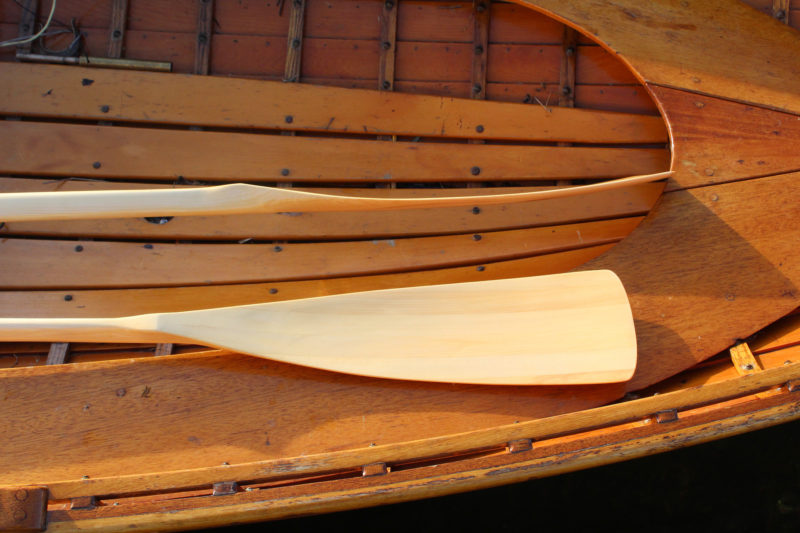
The blade’s slender profile is well suited to getting into the water cleanly at the catch. Despite their delicate appearance, the blades are strong enough for hard rowing and large enough for good power.
The center of the blade is just 9⁄16″ thick, providing a thin profile for minimal fuss getting into and out of the water. The throat is 15⁄16″ wide, which gives the oar a delicate appearance, but the 1-1⁄2″ depth has the strength required for hard rowing. Each oar weighs close to 3 lbs, and the difference between them is only a little over one ounce. The oars are finished with four coats of brushed-on spar varnish.
At the leathers, the oars are a perfect fit for standard #1 horned oarlocks—loose enough for easy feathering while still being contained within the lock’s opening; slide the oars inboard, and as soon as the leathers are clear of the lock, the oars can be lifted up and out.
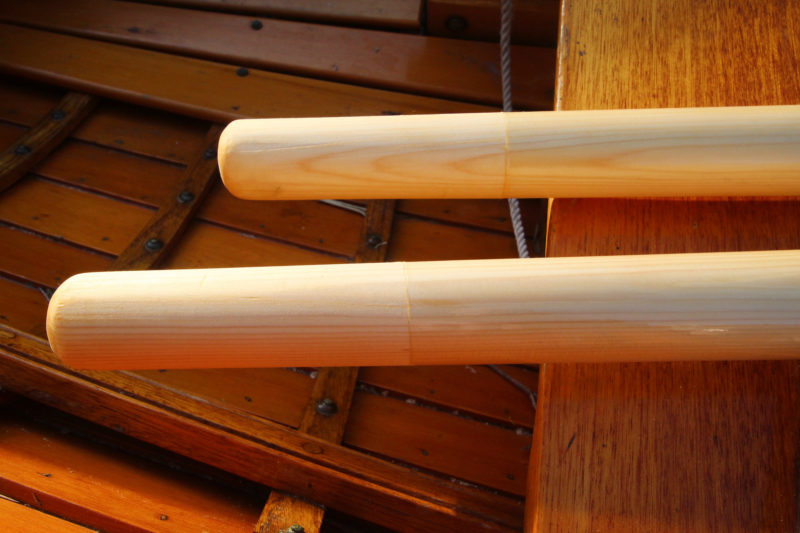
The handles are simply tapered out from the looms and left unvarnished for a comfortable, sure grip, even when wet .
The 7′ 6″ oars were well matched to my 14′ Whitehall and a pleasure to row with. The 10″ leathers offered a wide range of gearing to meet different conditions. Close to the buttons is the spot for speed on a downwind run, the middle is suited for calm to moderate conditions, and close to the outboard edge lowers the gearing for working to windward. With the Whitehall’s 4′ 3″ beam at the center rowing station, the grips have about 12″ between them when the buttons are next to the locks, and a 3″ overlap when the outboard ends of the leathers are in the locks. For most of my rowing, done mid-leather, there was a comfortable 2″ space between the grips.
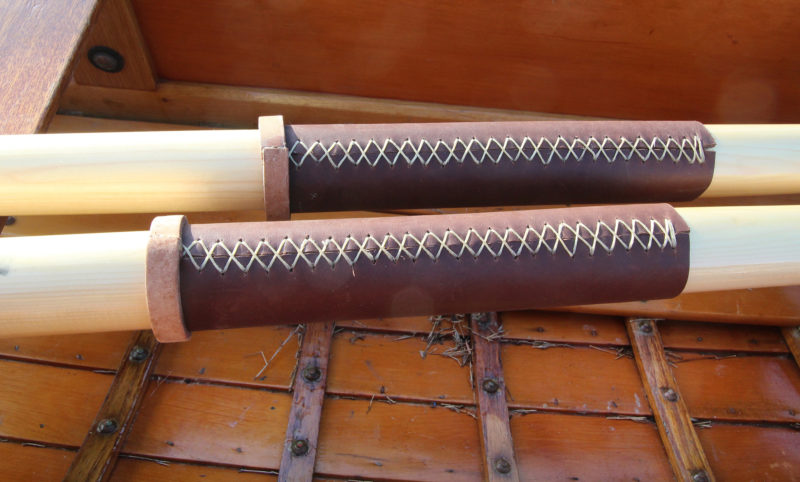
The 10″ sewn-on leathers allow the oars to be moved in and out in the locks to change the gearing to match the rowing conditions. The glued-on buttons keep the oars from sliding out through the oarlocks.
The glued-on leather buttons kept the oars from slipping out through the locks and, with a good rowing technique, don’t need to ride against the locks. To get the best out of the oars, the leathers should be well lubricated (I used tallow) to eliminate friction in the locks that would interfere with effortless feathering.
The blades, with their slender profile, slipped neatly into the water at the catch and came free at the finish just as effortlessly. A hard pull during the drive didn’t make the blades flutter; they stayed where I planted them. The looms had enough flex to soften a strong, quick catch and kept a slight bend through the drive, as they should, and then released that stored energy at the finish. I never felt that I was applying more power than the oars could manage.
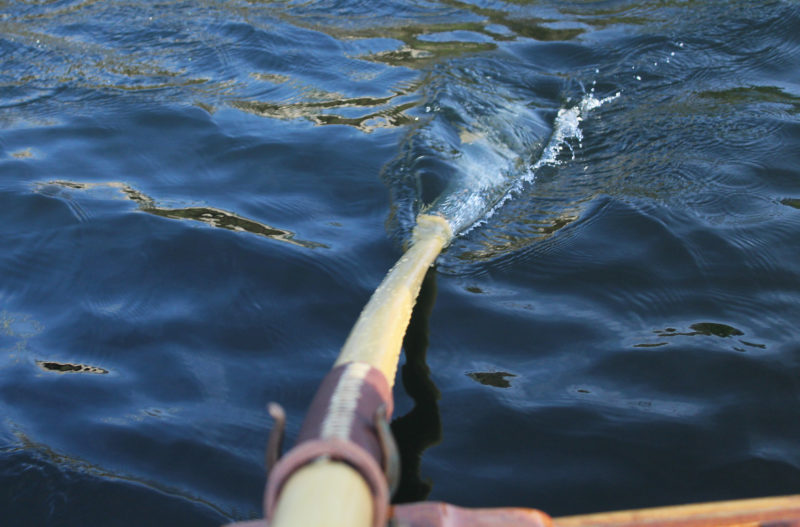
The looms will bend during a fast catch and a hard drive, a feature that eases the strain on the rower and gives the oars a lively feel.
My backing stroke can be a little less graceful than my forward stroke because I don’t use it as often, but the blade profile made me look good by being so easily moved in and out of the water. And I could effectively move the Whitehall sideways by sculling one blade well below the surface, where the thrust generated is close to horizontal rather than downward. The blade was well behaved, and I didn’t have to keep a tight grip to control it.
The Martin brothers have taken a welcome step by expanding their focus beyond guideboats and guideboat oars. For those of us who enjoy oars that feather, their new spruce oars are pretty to the eye, light in the hand, well behaved in the water, and inspire good rowing.![]()
Christopher Cunningham is the editor of Small Boats Magazine.
The Spruce Oars are available from Adirondack Guideboat for $399 (7′), $439 (7′ 6″), and $479 (7′ 10″). Options include traditional leathers, plastic Douglas-style collars, and cherry blade tips.
Is there a product that might be useful for boatbuilding, cruising, or shore-side camping that you’d like us to review? Please email your suggestions.
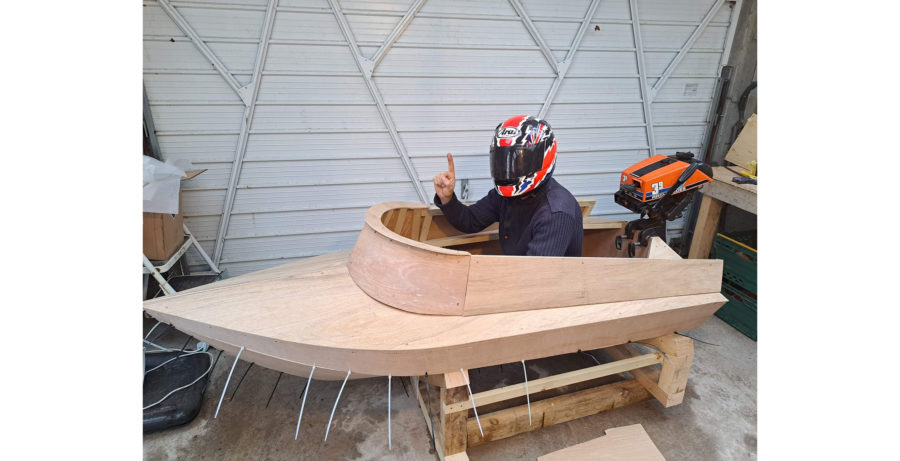


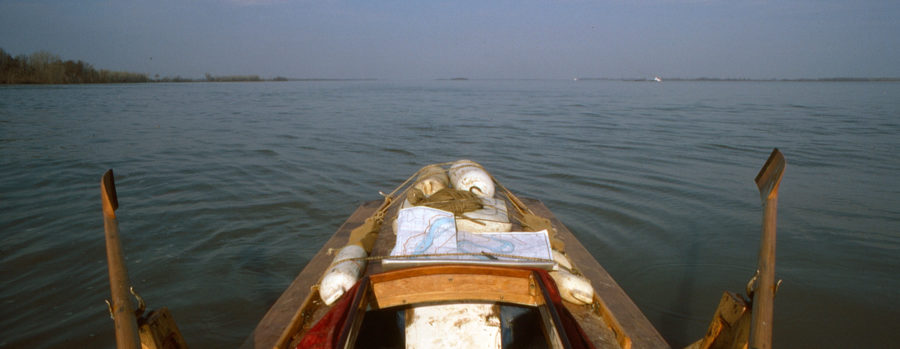

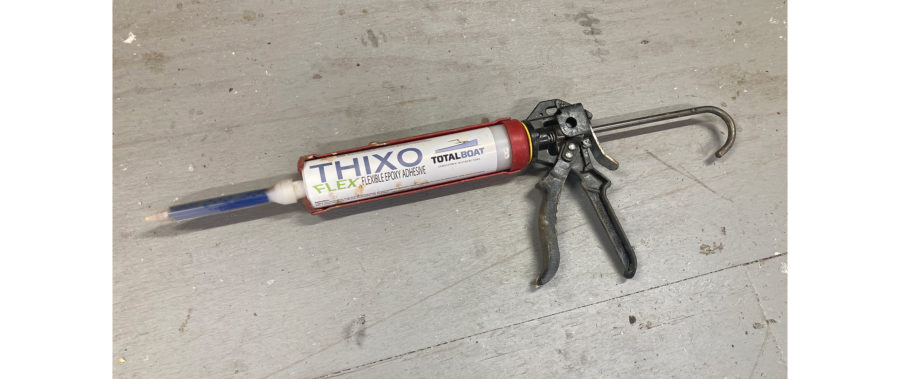
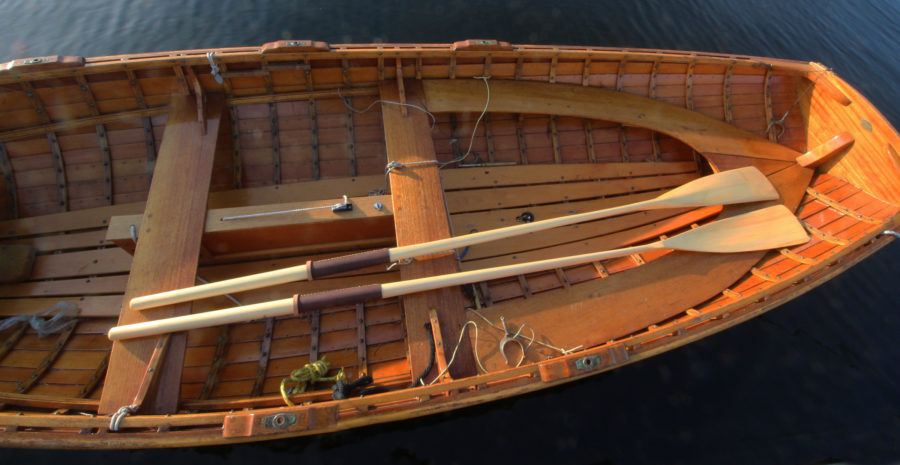

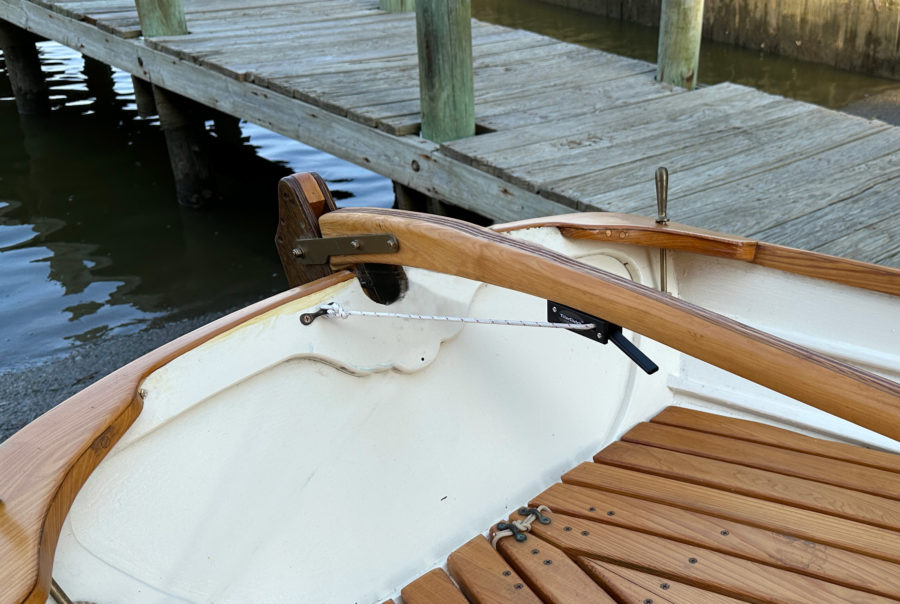
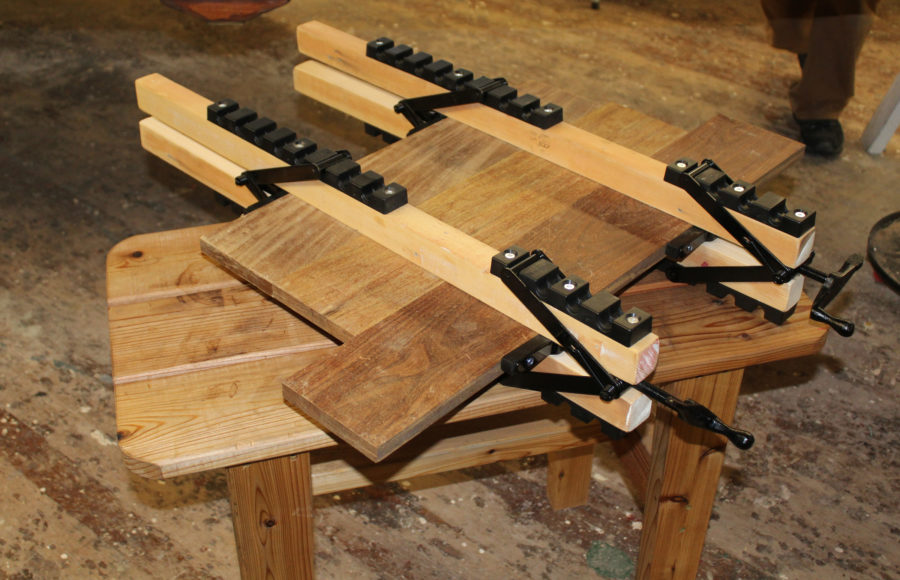
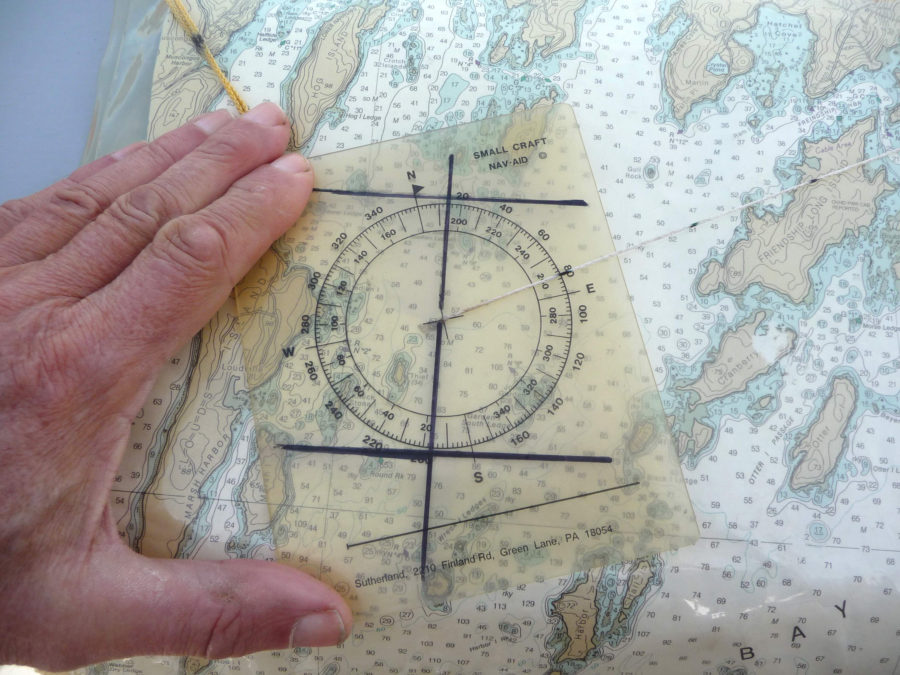
Just talking with Steve Kaulbach, who founded Adirondack Guideboat, about these. One of the things that the Martins have done is put a computer cutter to use in making these, which has made it easier to get the nice shape of the shaft and the delicate spoon on the blades. Hope to be able to try a pair.
What sort of glue do you think they used to laminate the blades? I don’t think there are too meant light- colored waterproof glues out there.